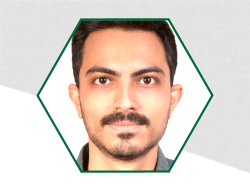Cutting thick plates is affected not only by the laser power but also by the cut kerf width and the melt flow dynamics that determine the ejection of the molten material. Employing the same laser beam intensity distribution for various thicknesses is the limiting factor when cutting thicker plates. This paper investigates fiber laser fusion cutting of 25 mm thick aluminium with dynamic beam shaping (DBS). While both static and longitudinal dynamic intensity distributions fail to cut this thickness with a 4 kW laser power, a cut through is achieved using annular and elliptical intensity distributions. However, an improvement of 45 % in cutting speed can be achieved using an elliptical intensity distribution compared to an annular one. In order to understand the effect of the beam shape, an infrared thermal camera is used to study lateral heat propagation when using different process parameters. The more efficient heat propagation in the cutting direction employing elliptical intensity distribution decreases the power losses compared to the annular intensity distribution. Moreover, to analyze the melt flow when changing the DBS frequency, high-speed imaging is utilized to observe the molten material inside the cut kerf. Finally, the cut edge quality is investigated for different cutting conditions.
Keywords
- Aluminium
- Dynamic Beam Shaping
- Laser Cutting
- Thick Plate

